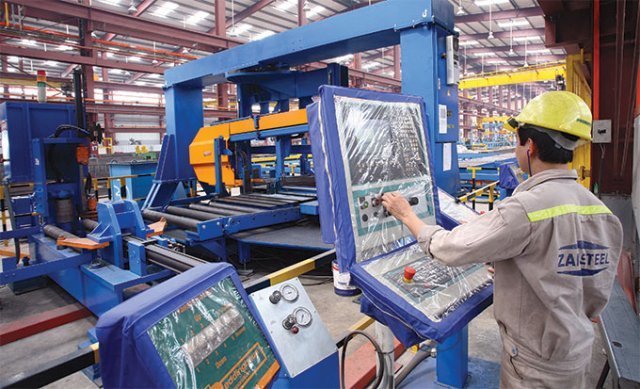 |
While this trend is not new to many, as the cost of production in China continues to rise and makes relocation seem like a financially-viable choice to many manufacturers, there are some other major drivers that are worth highlighting.
A recent survey conducted in November by the UBS Evidence Lab, which collected responses from 200 manufacturing companies with significant export business or supply to exporters from China, identified key drivers for moving export production out of China.
Relative to the size of their economies, ASEAN economies, especially Vietnam, may be well-placed to benefit from this production shift, given Vietnam’s key economic fundamentals, for example GDP growth, FDI, and inflation remaining positive while the country continues to invest heavily in infrastructure and helping manufacturers gain better access to key export markets by participating in several bilateral and multilateral trade agreements.
These drivers are on top of Vietnam’s competitive land acquisition costs and labor costs (versus those in China and other neighboring countries), which have been underlying drivers for “China +1” strategies several surveys have identified.
The Vietnamese Government has spent billions of dollars improving the country’s infrastructure to help attract FDI. According to figures from the Asian Development Bank and Bloomberg, Vietnam’s public and private sector infrastructure investment has averaged 5.7 per cent of GDP in recent years; the highest in Southeast Asia.
This direction has proven successful, as improved major infrastructure projects such as new highways and expanded ports and airports have enticed developers to develop industrial parks or expand close to new infrastructure. In return, developers can offer new infrastructure when attracting occupiers from China.
Vietnam has signed many agreements, including bilateral and multilateral agreements, with many nations. These include five free trade agreements (FTAs) within ASEAN, six others with partners including China, South Korea, Japan, India, Australia and New Zealand, and four bilateral free trade agreements, including the Vietnam - Japan FTA, the Vietnam South Korea FTA, the EU - Vietnam FTA, which is expected to be signed this year, and the Comprehensive and Progressive Agreement for Trans-Pacific Partnership (CPTPP).
Key benefits from these trade agreements is that they allow the removal of duties among member countries, which helps attract more manufacturers to set up production in Vietnam to access tax benefits when they export to those markets.
US tariffs on China in the ongoing trade war between is equivalent to a scenario of Vietnam essentially possessing an FTA with the US and the country also poses a lower risk of trade war than China.
It also means that, in the short term, Vietnam’s key exports like textiles and garments, footwear, mobile phones, consumer electronics, wooden furniture, seafood, bags, suitcases, and machinery could find better access into the US.
By reviewing the tariff list by product type, CBRE sees that TVs, mobile phones, and several wearable technology items are not yet included on the list and occupiers in these sectors, especially major occupiers, will look to relocate part of their supply chain to Vietnam to mitigate the trade war risk and tap into the country’s competitive costs.
VN Economic Times
 There was an increase in production shifting from China to alternative locations in Southeast Asia, including Vietnam, in 2018, according to CBRE Vietnam.
There was an increase in production shifting from China to alternative locations in Southeast Asia, including Vietnam, in 2018, according to CBRE Vietnam.